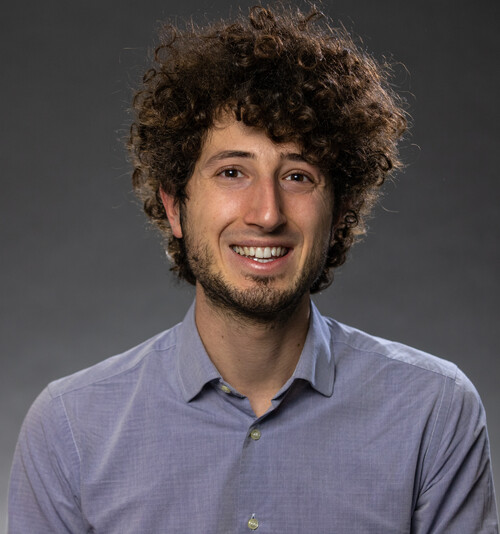Nicolò Foppiani

2022 Harvard Horizons Scholar Nicolò Foppiani first became interested in neutrinos as an undergraduate student in his home country of Italy where he studied at the same university as the Nobel Prize-winning nuclear physicist, Enrico Fermi. Fermi wrote the first theory that describes the interaction between neutrinos, electrons, protons, and neutrons and was the first to use the term “neutrino” publicly at a conference in 1932. Since then, scientists have experimentally confirmed his theory and directly observed neutrinos, but the subatomic particles are still not fully understood.
“Neutrinos are a bit strange because they don’t have any electric charge,” Foppiani explains. “Their mass is very tiny, which implies that they travel at almost the speed of light. Because they do not have an electric charge, their probability of colliding with something like a detector is tiny, which makes them difficult to study.”
Despite the challenges of studying neutrinos, Foppiani has put them at the center of his work as a fifth-year PhD student in physics at the Harvard Kenneth C. Griffin Graduate School of Arts and Sciences. His Harvard Horizons project “Are Neutrinos the Key to the Universe?” asks whether a new particle dubbed the “sterile neutrino” exists. His experiment, called MicroBooNE, has been conducted at the Fermi National Laboratory in Illinois, part of a collaboration that involves scientists from the US and abroad.
So far, Foppiani says that this experimental work has not confirmed the particle’s existence.
“We used a new and innovative detector technology to try to measure the possibility of sterile neutrinos,” Foppiani says. “It uses liquid Argon at cryogenic temperature to record high-resolution pictures of neutrino collisions. The data disfavor the simplest model for the particle’s existence.”
Foppiani cautions that his results are inconclusive and that more research is needed. He says that new technology may eventually lead scientists to a more favorable conclusion about the particle. “A new generation of analysis of this data is going to produce a more accurate, precise measurement that is hopefully going to be sensitive enough to give a more definitive answer to the existence of the sterile neutrino.”
The search for the sterile neutrino is important because its existence could help to explain several mysteries about the universe. One of those is the source of dark matter, for which sterile neutrinos could be a source. Dark matter, Foppiani explains, is inferred from the discrepancy observed between different methods of counting matter in the universe.
“When you look at a galaxy, you count more or less how many stars you see,” he says. “Then you take the average mass of a star and you can estimate how much mass is in this galaxy. Or you can say, ‘I want to estimate the mass of this galaxy by measuring its gravitational effect.’ If we do the second method, we infer five times more [mass] than if we do the first method.” The implication, Foppiani says, is that 80 percent of the mass of a galaxy doesn’t produce light. Hence the label “dark matter.”
Foppiani expresses excitement about the new technology he and other physicists are now using to study neutrinos. He views his research as an important step on the path to a greater understanding of the subatomic particles.
“We demonstrated for the first time how to use this technology to study sterile neutrinos,” he says. “Hopefully it will be something that new generations of students can use and build on.”

